#carey limousine
Text
Carey International: Luxury Limousine & Chauffeured Transportation
Looking for unparalleled luxury in transportation services? Look no further than Boston Asap Coach, your premier choice for Carey Chauffeured Transportation. With a commitment to excellence, we redefine travel experiences through our extensive fleet of luxury limousines and professional chauffeurs.
As a trusted partner of Carey International, we bring you world-class service tailored to your needs. Whether it's a seamless airport transfer, a sophisticated roadshow, or special event transportation, Boston Asap Coach ensures unmatched comfort and style.
Elevate your journey with Carey Limousine services - the epitome of sophistication in the world of chauffeured transportation. Experience the pinnacle of luxury with Boston Asap Coach. For more information please call us 800 960 0232 or visit our website www.bostonasapcoach.com
#boston coach car service#boston coach limo service#boston coach limousine service#carey chauffeured transportation#carey international#carey limousine#carey
1 note
·
View note
Text

Mariah Carey and Luis Miguel sit together in the backseat of a limousine in NYC | June 15, 1999
43 notes
·
View notes
Text
A harsh review/account of opening night from The New York Review of Books, mentioned by neither Redfield nor Sterne. I happened across it while looking up celebrities in the opening night audience.
*
The Gielgud-Burton Hamlet: Notes on a First Night
Dwight Macdonald
May 14, 1964 issue
“fiasco… 2. a complete or ridiculous failure, esp. of a dramatic performance, or of any pretentious undertaking.”
—Webster’s Unabridged (2nd. ed.)—
The first disappointment was the audience. I arrived early to find the place swarming with cops like a Hitchcock (or Mack Sennett) film, a hundred and fifty of them the papers said. They were masterfully tough with ordinary citizens who tried to infiltrate their defenses—“You wanna go to the station?” one asked a nice-looking young woman after some previous dialogue I missed; “Yes,” she said bravely, but I was able to create a diversion by pushing past without showing my ticket—and they were apologetically ineffective with more substantial-appearing citizens who had tickets (they never did get them herded into the lobby). All very American, like the TV trucks, the photograph garlanded with cameras, the brilliant lights that flooded on whenever a celebrity was thought to be disembarking from a Carey limousine. The trouble was that, while the mob in front of the theater looked like Celebrities—the handsomely gowned and coiffed women, mostly “of a certain age,” and their flushed, hard-faced escorts bursting impressively out of tuxedoes—they were not and knew they were not and, like the uncoiffed, untuxedoed, unticketed mob on the wrong side of the police lines, were hanging around in the simple, touching hopes of seeing somebody that was. But Celebrities were in short supply: the only ones I can attest to personally were Lillian Hellman (who left in the entr’acte) and Otto Preminger. (“Are we still on speaking terms Otto?” I asked, thinking of the latest bad review I’d given him: “Of course,” he grinned as we shook hands, “But I wish we were on writing terms”; a real pro.) And even if one adds, from the papers—you don’t know what you’ve experienced at these non-events until you read the papers—Dolores Del Rio, Gwen Verdon, Margaret Leighton, Hermione Gingold, Montgomery Clift, and Lee Radziwill, well I mean to say what do you have really? The one big Celebrity we were all waiting for arrived, with a clatter of mounted police and a few screams, at a remote side entrance into which she instantly vanished. She also disappeared, in the entr’acte, to visit her husband in his dressing room, or so I read in the papers. The only interesting dialogue I overheard was between a hairdo and a tuxedo: “Hey, you look great, Sam, all sunburned!” “Yeah, just back from Puerto Rico.”
When I finally gave up and took my seat, I was not encouraged to see the curtain was up on a bare stage. Bad omen; last time was Kazan’s J.B., and here even less promising: a rehearsal stage with position marks on the floor and the lathes aggressively exposed in the underpinnings of the sole concession to stage design: a higher level. The one moment of excitement that has survived for me in our theater all the way back to The Bat and The Unknown Purple is when the house lights go down, the footlights come up, and the curtain begins to rise: a moment of hope, despite all past experience, before the infinite magic of the possible has begun to be ground down by the extremely finite machinery of the actual. We were to be deprived even of this. I thought, but, as with other aspects of this confused, style-less production, it turned out we weren’t exactly. When the house lights went down, the curtain was lowered—surely some kind of theatrical landmark?—to rise at once on the same bleak prospect, this time with Francisco at his post; enter Bernardo. “Who’s there?” “Nay, answer me, stand and unfold yourself.” “Long live the king!” And we were off. In a manner of speaking.
“This is a Hamlet acted in rehearsal clothes, stripped of all extraneous trappings, unencumbered by a reconstruction of any particular historical period.” So, in the program notes, Sir John Gielgud, who directed and who was, I think, chiefly responsible for the fiasco. Charging the customers eight bucks to see a rehearsal may have been attractive as a fashionable gimmick—the medium’s the thing now—or as a way of saving money, but Sir John’s justification is nonsense. There is no escaping history even disguised in rehearsal clothes, since these were different in 1864 from today, while in 1764 they would have been what we now call “costumes.” The only historically “unencumbered” Hamlet would be a nudist one—and in fact I once saw in Paris a scene in which Ophelia, at least, was stripped and unencumbered except for a cache-sexe. And what is extraneous about actors, like the rest of us, wearing appropriate dress (“trappings”)? There is much to be said for a modern-dress Hamlet like the excellent one Basil Sidney did around 1926, as a way of freeing the play from that massively fake Irving-Belasco scenery and those boguslooking halberds and doublets right out of the costume warehouse. There is also much to be said for a freshly interpreted period production like Zeffirelli’s Romeo and Juliet, where the clothes (especially the men’s hats) were fantastic and beautiful while the sets had the clear, simple colors of the backgrounds in good Renaissance paintings. But there are no advantages, beside cheapness, in a rehearsal-clothes Hamlet; one would think even an actor might see that. Hamlet is, among other things, a drama of court intrigues, of power politics; it begins and ends with soldiers; when Fortinbras comes on at the end, it is not merely to clean up the corpses, it is also because power too, just can’t be left lying about on the stage. Modern dress marks the social dimension: Fortinbras wears a uniform, the servants livery, the courtiers dinner jackets or lounge suits, the soldiers trench coats, the king and queen formal dress with decorations. Rehearsal clothes, while not a-historical, are a-social. Fortinbras marches in wearing slacks and a sweater; Horatio wears a windbreaker; courtiers, servants, soldiers are indistinguishably casual and tweedy. “Boy, did they need those costumes!” I overheard a girl say in the entr’acte.
In Basil Sidney’s Hamlet—or in Orson Welles’s Julius Caesar ten years later—I forgot the modern dress in a few minutes, but here those rehearsal clothes were always offputting. Especially since Sir John tried to have it both ways: Hamlet conveniently wore an elegantly fitted jersey and pants of deepest black, with gleamingly polished black pumps; Polonius and Claudius wore well-pressed, neatly buttoned suits with neckties; Gertrude and Ophelia semi-formal bodices with long flowing skirts—all of which made the sweatered, tieless servants and nobles constantly puzzling. And the players in the play-within-a-play were elaborately costumed, even to stylized masks. A very peculiar rehearsal.
Sir John also skimped on the cast, an ill-assorted crew who never seemed to be getting through to each other. There were at least four unharmonized acting styles. Traditional Shakespearean: Burton, George Rose’s gravedigger, Eileen Herlie’s Gertrude, Dillon Evans’s Osric. Broadway: Hume Cronyn’s Polonius, William Redfield’s Guildenstern. Indeterminate: John Cullum’s Laertes, Alfred Drake’s Claudius. Amateur Night: Robert Milli’s Horatio, Linda Marsh’s Ophelia. There were some good performances. Rose is still a superb Shakespearean clown (and one of the few times when Burton seemed to be relating to others—and enjoying himself—was when he was matching wits with him) and Cronyn gave a briskly professional, and original, interpretation of Polonius, rapping his lines out like a spry old top executive, full of smug know-how. But he was out of key with the Shakespeareans. The great triumph was Gielgud’s recorded voice as the ghost—what splendid lines Hamlet, Senior, has, by the way, one can see where his son got his flair for self-expression—which was beautifully articulated and cadenced, and at the same time coarse as if the vocal cords were deliquescing like those of Poe’s M. Valdemar: “the sound was harsh and broken and hollow…the voice seemed to reach our ears from a vast distance, or from some deep cavern within the earth…it impressed me as gelatinous or glutinous matters impress the sense of touch.” The great disaster, even worse than the breathy ranting of Horatio, was poor Miss Marsh’s Ophelia—her mad scene was as embarrassing as if one were watching a pretty young thing really going nuts before one’s eyes. The Times’s egregious Mr. Taubman, while enthusing—I think this ghastly word is justified here—about everything else, did feel obliged to note that Miss Marsh was “in a little over her head as Ophelia,” though adding at once, as if frightened by his daring, “she manages the Mad Scene with a touch of rue.” The rue was all in the audience, however.
I expected Richard Burton’s Hamlet to be tough, virile, even brutal, but, perhaps because Sir John toned him down too much, he proved to be full of boyish charm, if anything a little epicene. He was Mercutio rather than Hamlet, best in the satiric speeches like the “Get thee to a nunnery” one, where his delivery rose to real power at the end: “You jig, you amble, and you lisp…and make your wantonness your ignorance. Go to, I’ll no more on’t; it hath made me mad. I say we will have no more marriages…” (Did I detect an un-easy rustling in the audience?) His voice is an extraordinary musical instrument, but he used it with the coldness of a virtuoso; for all the Welsh charm, there was surprisingly little feeling in his performance. Also he seemed to have no middle range, nothing between soft complaint or ingratiation and a full-throated bellow. One cannot perhaps expect any actor to render all the facets of Hamlet, but two are essential: he was a prince and he was an intellectual. Burton missed both. He was without dignity; there was no space between him and the others; he was always edging up to them, shrinking away from them, handling them, bullying them, more like a teddy boy than a prince, shamelessly “indicating” and leaping about the stage. (This must have been Sir John’s directorial fault.) He ruins the play scene, for instance, by swarming all over Gertrude and Claudius, as when Ophelia says of the Prologue, “This brief, my lord”, and he replies “As woman’s love,” actually pointing to Gertrude; and later, after the Player Queen has vowed eternal constancy, addressing his “If she should break it now!” directly to Gertrude. Nor is he convincing as an intellectual. Hamlet is constantly bringing himself up short with self-criticism after he has torn a passion to tatters and split the ear of the groundlings; with Burton, one believes in the latter mood but not in the former. He roars out satisfactorily “Bloody, bawdy villain! Remorseless, treacherous, lecherous, kindless villain! O vengeance!” but when he goes on, “Why, what an ass am I!” and accuses himself of unpacking his heart with words like a whore and cursing “like a very drab,” in Burton’s delivery these lines are just another kind or rodomontade. I suppose “To be or not to be” is by now a hopeless proposition—the actor must see it approaching as a skier sees himself gliding toward a suicidally steep slope. Burton adopts the modern, sophisticated strategy of trying to throw it away. But it won’t be thrown away.
Apparently Burton felt something was wrong about the first night. He blamed the audience in one interview: “They did not pay attention. They were awed with themselves. There were so many celebrities out on the other side of the footlights they hardly had time to notice us.” But there were not many celebrities, and even if there had been what does he expect if he insists on marrying Elizabeth Taylor? On the radio, I’m told, he was more realistic, blaming himself, which is to his credit, since, with the expected exception of Walter Kerr (and the less expectable one of John Chapman of the News) the critics were as usual—uncritical.
Maybe they hadn’t made the mistake I did of re-reading the text. What a work! There seems to be a tag in every other line, tags that have become mortised so deeply into us we often don’t know when we are echoing them, formulations that have become part of the racial unconscious, of our very language. Only the King James Bible, from the same miraculous half-century, contains a larger stock of wonderful chestnuts. And a central character, direct and ambiguous, crafty and noble, tender and cruel, elevated and ribald, intellectualizing everything and yet also acting out his contradictions—can this hero, who is the play more than any other of Shakespeare’s heroes, and whose motivations and character have been matters of dispute among scholars and critics for centuries, can one reasonably expect any actor to render him fully on the stage, or any company to rise to the greatness of the language—the “big” lines are by no means limited to Hamlet’s part—or any director to make dramatic a work that is essentially literary and intellectual without losing those qualities? Lear’s moral impressionism can be more moving, and coherent, on the stage (the cinema might be an even better medium) than when read in cold print. Or, the opposite case, that tightly constructed melodrama, Macbeth, so perfectly designed for the theater, with a clearly defined villain and villainess, the most “advanced” and realistic psychology (the dialogues between Macbeth and his Lady before and after Duncan’s and Banquo’s murders often sound like Ibsen, or Freud) combined with great set pieces of rhetoric that “work” theatrically and, unlike Hamlet’s soliloquies, don’t require the actor to create a whole personality as a launching-pad. So perhaps no actor can ever give us the complete Hamlet of the text—as no singer can fulfill the impossible demands Wagner made—and perhaps Hamlet will always read better than it plays. Still, Sir John and Mr. Burton might have done better.
4 notes
·
View notes
Text
Wheels of Refinement: Navigating Chicago's Premium Transportation Options
As the bustling city of Chicago continues to attract top-tier businesses and a discerning workforce, the demand for premium transportation solutions has never been higher. In a metropolis renowned for its vibrant culture, world-class dining, and diverse entrepreneurial spirit, the daily commute has become a pivotal aspect of the urban experience. Recognizing the need to cater to the unique mobility requirements of Chicago's elite, a new era of premium transportation options has emerged, promising to redefine the way the city's discerning residents and professionals navigate their daily journeys.

Elevating the Commute: Luxury Ridesharing and Chauffeured Services
For the discerning Chicago commuter seeking a touch of elegance and exclusivity, the city's premium ridesharing and chauffeured services offer a refined alternative to traditional transportation solutions. Companies like Blacklane, Carey, and Windy City Limousine have stepped up to the challenge, providing a fleet of meticulously maintained luxury vehicles, driven by highly trained and discreet professional chauffeurs.
These premium services cater to the needs of busy executives, time-pressed professionals, and individuals who value the seamless integration of comfort, convenience, and prestige. From the sleek and spacious Mercedes-Benz S-Class sedans to the stately Lincoln Navigator SUVs, the vehicles in these fleets are designed to provide an unparalleled level of refinement and personalized attention.
Beyond the superior quality of the transportation, these premium service providers also emphasize the importance of reliability, punctuality, and personalized customer service. Clients can expect door-to-door pickup and drop-off, real-time flight tracking, and the ability to customize their journeys with amenities such as Wi-Fi, refreshments, and even a private workspace – all in the pursuit of maximizing productivity and ensuring a stress-free commute.
Private Aviation: Bypassing the Crowds
For the ultimate in convenience and exclusivity, Chicago's premium transportation landscape extends beyond the realm of ground-based mobility. The city's network of private aviation services offers a compelling solution for those seeking to bypass the crowds and congestion of commercial air travel.
Companies like Priester Aviation, Jet Linx, and Midcoast Aviation provide a range of private jet charter and fractional ownership options, catering to the needs of discerning business leaders, high-net-worth individuals, and those seeking a more tailored and efficient air travel experience. By leveraging these services, clients can enjoy the benefits of on-demand, private air transportation, including the flexibility to choose their departure and arrival airports, the ability to bypass lengthy security lines, and the comfort of a customized in-flight experience.
Moreover, private aviation can be particularly advantageous for Chicago-based professionals who frequently travel to regional hubs or satellite offices, allowing them to maximize their time and productivity while maintaining a level of privacy and exclusivity that is difficult to replicate in a commercial setting.
Luxury Mobility Memberships: Seamless Multimodal Experiences
To cater to the diverse transportation needs of Chicago's premium clientele, a new breed of luxury mobility memberships has emerged, offering a comprehensive and tailored approach to urban commuting. These membership-based services, such as Velocity and Windy City Wheels, provide clients with access to a curated portfolio of premium transportation options, including luxury ridesharing, chauffeured services, private aviation, and even exclusive access to high-end vehicle fleets.
By consolidating these premium mobility solutions under a single platform, these membership programs offer a seamless and integrated commuting experience, empowering clients to effortlessly navigate the city's transportation landscape. Through a user-friendly mobile app or concierge service, members can plan and book their journeys, manage their travel preferences, and enjoy a level of personalized attention that is rarely found in traditional transportation models.
Chicago corporate transportation Moreover, these luxury mobility memberships often include additional perks and benefits, such as dedicated customer support, priority booking, and access to exclusive events or networking opportunities – further enhancing the overall value proposition for discerning Chicago residents and professionals.
Sustainable Luxury: Embracing Electric and Hybrid Vehicles
As the global push for sustainability gains momentum, Chicago's premium transportation providers have also embraced the shift towards eco-friendly mobility solutions. Companies like Lucid, Rivian, and Tesla have established a strong presence in the city, offering a range of high-performance, luxury electric and hybrid vehicles that cater to the needs of environmentally conscious, yet discerning, commuters.
These premium electric and hybrid options not only provide the same level of refinement and comfort as their traditional counterparts but also boast impressive performance capabilities and extended driving ranges. By incorporating these sustainable vehicles into their fleets, Chicago's premium transportation providers are able to offer their clients the opportunity to reduce their carbon footprint while still enjoying the luxury and convenience they have come to expect.
Furthermore, many of these eco-friendly transportation solutions are integrated with robust charging infrastructure and smart mobility technologies, ensuring a seamless and efficient charging experience for clients and further reinforcing Chicago's commitment to sustainable urban development.
Conclusion
As the city of Chicago continues to evolve and attract a discerning clientele, the demand for premium transportation solutions has become increasingly evident. From luxury ridesharing and chauffeured services to private aviation and exclusive mobility memberships, the city's transportation landscape has undergone a remarkable transformation, catering to the unique needs and expectations of its most refined residents and professionals.
By embracing innovation, sustainability, and a relentless pursuit of excellence, Chicago's premium transportation providers have raised the bar, offering a level of refinement, convenience, and personalized attention that is unparalleled in the urban commuting experience. As the city continues to cement its reputation as a hub of economic and cultural prowess, the continued development and integration of these premium mobility options will undoubtedly play a pivotal role in shaping the future of urban transportation and solidifying Chicago's status as a premier destination for the discerning traveler.
0 notes
Text
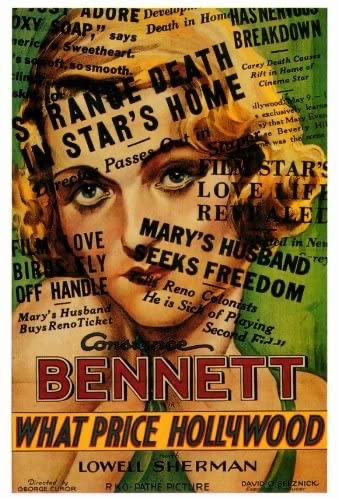
What Price Hollywood? (1932)
Brown Derby waitress Mary Evans (Constance Bennett) is an aspiring actress who has an opportunity to meet film director Maximillan Carey (Lowell Sherman) when she serves him one night. He is very drunk but is charmed by the young girl, and he invites her to a premiere at Grauman's Chinese Theatre. Adhering to his policy of living life with a sense of humor, he picks her up in a jalopy rather than a limousine and then gives the parking valet the car as a tip.
Max takes Mary home with him after the event, but the next morning remembers nothing about the previous night. She reminds him he promised her a screen test and expresses concern about his excessive drinking and flippant attitude, but he tells her not to worry.
Mary's first screen test reveals she has far more ambition than talent, and she begs for another chance. After extensive rehearsals, she shoots the scene again, and producer Julius Saxe (Gregory Ratoff) is pleased with the result and signs her to a contract. Just as quickly as Mary achieves stardom, Max finds his career on the decline, and he avoids a romantic relationship with her for fear she will be caught up in his downward spiral.
Mary meets polo player Lonny Borden (Neil Hamilton). He genuinely loves her and, although he is jealous of the demands made on her by her career, he convinces her to marry him, against Julius and Max's better judgment. Lonny becomes increasingly annoyed by the dedication of his movie star wife to her work, and finally walks out on her. After their divorce is finalized, Mary discovers she is pregnant.
Mary wins the Academy Award for Best Actress, but her moment of glory is disrupted when she's called upon to post bail for Max after he's arrested for drunk driving. She takes him to her home, where he wallows in self-pity despite her encouragement. Later, alone in Mary's dressing room, he stares at his dissolute image in the mirror and compares it to a photograph of himself in earlier days. Finding a gun in a drawer, he kills himself with a bullet to the chest.
Mary becomes the center of gossip focusing on Max's suicide. Hoping to heal her emotional wounds, she flees to Paris with her son and reunites with Lonny, who begs her to forgive him and give their marriage another chance.
#constance bennett#classic hollywood#golden age of hollywood#classic movie stars#classic cinema#classic movies#old hollywood#1930s cinema#1930s hollywood
1 note
·
View note
Link
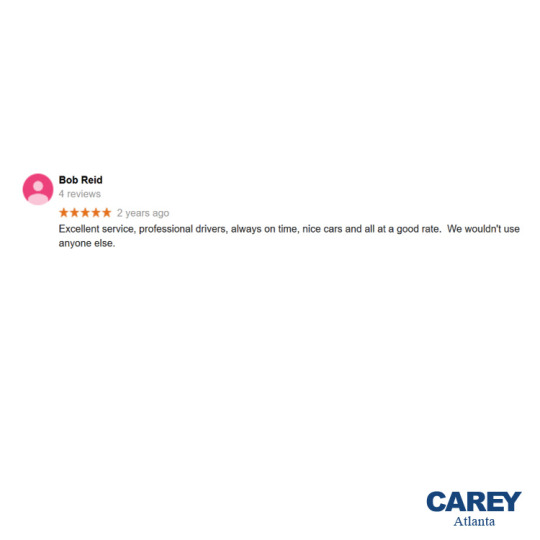
See more reviews below: Carey Executive Limousine 245 University Ave SW, Atlanta, GA 30315 (404) 223-2000 PJC3+VF Atlanta, Georgia
from https://local.google.com/place?id=13124965900316581832&use=posts&lpsid=425220507141236269
1 note
·
View note
Text
#1yrago Superstar Limo: The story of Disney's "worst attraction ever"
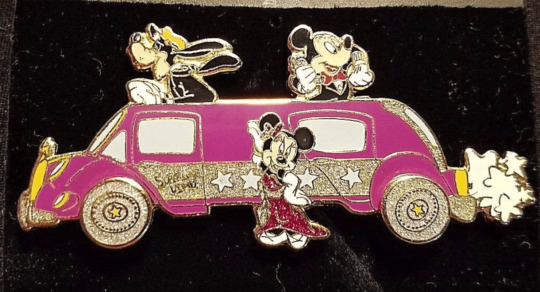
We can all take some comfort that even Disney, with all its money and creative resources, can fail.
Take for instance, Disney's epic failure, a long-gone ride called Superstar Limo. The dark ride, that was once in California Adventure's Hollywood Pictures Backlot area, took guests in a sparkly purple limousine through a distorted version of Hollywood and Los Angeles. It was open just under a year and was later (and as you'll see in the video, hilariously) repurposed as the Monsters, Inc. ride.
Kevin Perjurer of the YouTube channel Defunctland describes it as their "worst attraction ever" and offers this critical history of it. His video is 20 minutes long but worth a watch, as his research goes deep and this "Superstar Limo" truly has to be seen to be believed. Be sure to stay to the end to see the reactions of the cast of The Drew Carey Show and Rosie O'Donnell when they all took a whirl in it together.
Also, in case you're curious, here's a look at the ride without commentary:
https://boingboing.net/2018/05/26/superstar-limo-the-story-of-d.html
10 notes
·
View notes
Text
Un Noël Sans Gluten, Partie 3

IX.
Là, c’est le chapitre où on remet un peu les choses dans leur contexte pour le téléspectateur débile qui, jusque là, à surtout fait semblant de comprendre. Pour peu qu’il ai des souvenirs masturbatoires avec Mariah, on a un peu perdu son attention à un moment donné, logique.
Parce qu’elle est gluten-free, et que (comme si on l’avait pas assez dit), Mandy se chie dessus dans des torrents infinis de diarrhée si elle voit du gluten, elle ne s’intéresse au Plus Grand Concours de Pâtisserie de New York de Tous Les Temps que de très loin et laisse Marlène, sa secrétaire, s’occuper du reste.
C’est à cause de ça que Tristan ne l’a pas vu depuis bien trop longtemps maintenant.
Il faut qu’il lui dise.
Dans le doute, il passe dès qu’il le peut au NYP, La cantine burger où il faut être vu avec de la sauce BBQ maison au coin de la bouche et une frite collée sur la joue, en espérant tomber sur elle par le plus grand des hasards, comme l’autre fois…
Là, dans le film, on ferait des plans de Tristan qui attend devant le restaurant avec l’automne qui laisse sa place à l’hiver, un zoom sur son petit pull qu’il troc pour un manteau, de la neige qui recouvre peu à peu le trottoir, et surtout, SURTOUT, les décorations de Noël qui envahissent peu à peu la rue et les commerce.
Le concours commence demain.
Tiens, cette femme qui passe à coté de Tristan et qui lui fait un sourire… On dirait Mariah Carey !
Non, c’est impossible… et pourtant…
Quand Tristan se tourne pour vérifier, il tombe nez à nez avec Mandy.
« Salut Tristan ! A mon tour de t’offrir un burger ! »
Quelle femme.
Assis au chaud à l‘intérieur, Tristan se jette à l’eau avant que le serveur n’ai pris leur commande.
« Mandy, je suis…
Le téléphone de Mandy sonne.
« Excuse moi, il faut absolument que je prenne cet appel… On remet ça pour le burger ? Et bonne chance pour le concours ! Contente que tu participes ! »
Elle se précipite vers la sortie du restaurant, sans que Tristan, mou comme un genou, n’est le temps de réagir….
Mandy, dehors, respire enfin.
« Non, non et non ! Jaime ma vie comme elle est ! Pourquoi est-ce que tout devrait toujours changer ? »
Elle sent alors le doigt délicat de Mariah sur son épaule fébrile…
« Wow ! mais calme toi ! Respire… Je ne pensais pas que l’Amour, le vrai, te ferait paniquer à ce point là ! Tu veux que j’appelle une ambulance ? Ou alors… J’ai une meilleure idée… »
X.
C’est enfin le soir de la Grande Finale.
Tristan est, bien sûr, toujours en lisse.
« - Tristan, mon fils. Quoi qu’il se passe ce soir, je te confie le nouveau département sans gluten de notre biscuiterie multinationale tentaculaire. J’ai compris que tu avais du talent, et que tu faisais ça avec amour. Moi qui suis totalement dénué de chacune de ces qualités, je dois combler ce vide avec un collaborateur tel que toi.
-Papa… C’est sympa, mais… Non pas que ça me regarde bien sûr… Que fait Marlène accrochée à ton bras ?
-Fiston. C’est ta nouvelle Maman. On s‘envoie en l’air depuis le chapitre…
-Depuis le septième chapitre mon gros loukoum dégoulinant hihi !
-Et mariés depuis hier soir. La vie est trop courte fiston… »
Sacrée Marlène ! La voilà pour moitié héritière d’une entreprise internationale ! Peut-être pas si conne que ça la petite secrétaire !
Pendant ce temps, devant le plus grand hôtel de la ville où se déroule la grande finale du plus Grand Concours de Pâtisserie de New York de Tous Les Temps, Mandy descend de son taxi.
Elle est très angoissée : et si le truc de Mariah ne marchait pas ? Elle essaie de se rassurer « Allez ma grande. C’est quand même Mariah Carey ! S’il y en a bien une qui s’y connaît en trucs de Noël, c’est bien elle ! »
Une fois son long manteau de fausse fourrure déposé au vestiaire, elle pénètre dans la salle de réception.
Alors, tous les regards se tournent vers elle.
Merde ! Le dress-code !
Mandy attrape un poinsettia parmi le milliard qui décore la porte d’entrée et l’épingle, comme par magie, au décolleté plongeant de sa robe fourreau de velours noir.
Bravo Mandy ! On l’a échappé belle !
La salle est somptueuse. Enfin, faut aimer Noël et son folklore.
Tout est rouge, vert et blanc. Les murs, le mobilier, les invités…
David Hasselhoff, qui présente la soirée (on vous avez dit qu’il y aurait des guests) est même déguisé en petit bonhomme d’épices !
Il ouvre les festivités en chantant « Santa Claus Is Coming To Town », accompagné par les Hanson et Stevie Wonder, ça swing !
Les rideaux s’ouvrent.
Derrière David Hasselhoff, deux établis de cuisine.
Derrière les deux établis de cuisine, deux finalistes totalement en stress.
Entre les deux, une cloison les empêche de se voir et de se mélanger les ingrédients.
La Grande Finale commence.
Marlene aperçoit Mandy dans la foule.
« -Mandy ? Mais qu’est-ce que tu fous là ? Tu vas te chier dessus !!!
-Pas ce soir Marlene. Pas ce soir… »
Là, y a une scène un peu chiante mais obligatoire dans laquelle on voit les deux concurrents faire leur épreuve de merde dans des nuages d’ingrédients diverses, la sueur au front… Qu’est-ce qu’on s’en fout... Enfin, vous pouvez en profiter pour aller uriner, ou vous chercher un truc à grignoter dans la cuisine. Si, si, allez y ! c’est vraiment long comme scène !
Au pire vous ratez : Tristan qui stress mais qui assure, son père et Mandy qui le regardent inquiets, Marlène qui sert fort la main de son Sugar Daddy de Monsieur Gihayla, et ces fameux ingrédients diverses qui virevoltent dans tous les sens.
C’est bon vous êtes de retour ? Nickel, on enchaîne !
XI.
Tristan termine second.
Y a pas de justice. C’est comme ça la vie : c’est de la merde. Et on en a marre de toutes ces niaiseries de conte de Noël de merde ! Ça vous fait vraiment rêver ces conneries ? Vous pensez vraiment que Mariah Carey et David Hasselhoff ils ont que ça à foutre ???
Ok. On se calme… Pardon.
On reprend.
Mandy retrouve Tristan qui descend de scène.
« - Mandy ? Mais ! Qu’est-ce que tu fous là ? Ne risques tu pas de te… Enfin… De t’abandonner dans ton slip ? Tout ça pour me voir échouer…
-Échouer ? Oh, Tristan… Tu n’as pas échoué.
-Je suis arrivé second ! J’ai perdu ! J’eus tant aimé que le sans gluten conquiert le monde, afin que je conquiers ton cœur…
-C’est quand je t’ai vu dégouliner de souffrance et de malheur la première fois dans mon bureau que tu m’as conquises, andouille. Tout ce mal être, cette frustration… Ça m’a touché. Allez, roule moi une pelle.
-Oh Mandy… Slurp, slurp… Sluuuuurp… Mandy ! Pas ici !
-Tu as raison. Partons vite avant que le sort de Mariah ne fasse plus effet ! »
Grâce à Mariah, ou à la schizophrénie latente de Mandy, elle pu se déplacer dans les nuages de farine de blé sans que cela ne l’atteigne. Mais le charme pouvait se rompre à tout moment, surtout maintenant que Mandy avait obtenu ce qu’elle voulait : l’Amour.
Alors que nos deux amoureux s’échappent de la soirée dans de grands éclats de rires à moitié hystériques, le père de Tristan les intercepte.. »
Embrassade de bonhommes viriles.
« Comme promis, nous allons, toi et moi, ouvrir un département sans gluten affilié à notre biscuiterie multinationale tentaculaire, pour que rien n’empêche les êtres faibles gastriquement comme Mandy de vivre leur vie normalement. »
Tristan, l’œil humide et le zizi tout dur remercie son petit Papounet d’amour.
Tout est si mielleux que même les yeux de Mandy brillent de mille feux.
Ils quittent enfin la réception et trouvent rapidement un endroit pour s’aimer physiquement.
« Monte là dedans ma mie (de pain), c’est la limousine de Papounet d’amour ! »
XII.
Quelques mois plus tard, nous retrouvons nos héros pour un épilogue enchanteur.
Mandy est chez elle.
Un dossier rouge traîne sur son bureau.
« Chérie ! Viens manger ! »
Nous suivons Mandy dans la cuisine.
Tristan l’attend avec un super petit déjeuner de ouf. Il y en a plein la table.
« Goûte moi ça, c’est la nouvelle recette que je dois soumettre aujourd’hui au département sans gluten qu’on a monté avec Papounet d’amour au sein de la biscuiterie multinationale tentaculaire familiale qu’avait crée Grand-Père Cookie… »
Mandy englouti son pancake…
« Hum… C’est… Hum… c’est parfait… » dit elle amoureusement.
On klaxonne à la porte.
Par la fenêtre, on aperçoit une limousine et une Marlène totalement déformée par l’attente d’un heureux événement.
Elle est enceinte jusqu’au coude.
« Allez Mandy, c’est Papounet qui nous amène au bureau ! »
Marlène crie dans la rue, toujours aussi conne.
« Tiens ma chérie, je t’ai fait un petit-déjeuner, un déjeuner et un encas. Tu vas pouvoir bosser à fond, et le ventre plein, sur ton nouveau dossier ! »
En lui disant ces mots, Tristan tient sa bien aimée dans ses bras et l’embrasse tendrement. Il lui tend un sac de papier kraft plein de bouffe sur lequel il a pris soin de dessiner un petit cœur discret, dans un coin, au feutre rose.
Mandy monte dans la limousine que l’on voit s’éloigner au loin.
Une femme de dos suit la voiture du regard.
Elle se retourne pour faire un clin d’œil face caméra : c’est Mariah Carey.
THE END.
Nota Bene : Les symptômes de l’intolérance au gluten n’ont absolument rien à voir avec ce qui est décrit ici et sont beaucoup moins rigolos. En cas de doute, consultez votre médecin pour une coloscopie. Bisous
2 notes
·
View notes
Text
Top 7 Reasons to Book Carey Limousine for Corporate Travel
In today’s fast-paced business environment, first impressions matter, and the way you travel can significantly impact your professional image. When it comes to corporate travel, booking a luxury limousine service like Carey Limousine can elevate your experience and ensure you arrive at your destination in style and comfort. Here, we explore the top reasons why Carey Limousine should be your go-to choice for corporate travel.

Unmatched Comfort and Style
Luxurious Fleet of Vehicles
One of the primary reasons to choose Carey Limousine is the impressive fleet of vehicles they offer. With a range of options, including sleek sedans, spacious SUVs, and sophisticated stretch limousines, you can select the perfect vehicle that aligns with your corporate image. Each vehicle is meticulously maintained and equipped with premium amenities, ensuring a comfortable ride for you and your colleagues.
Enhanced Comfort for Long Journeys
Corporate travel often involves long hours on the road or in the air. Carey Limousine’s plush interiors, ample legroom, and advanced climate control allow you to relax and unwind during your journey. This level of comfort is essential for maintaining productivity, as you can utilize your travel time for important calls, meetings, or simply to recharge before your next appointment.
Professional Chauffeurs
Trained for Excellence
Carey Limousine prides itself on employing professional chauffeurs who are not only skilled drivers but also trained in customer service excellence. These chauffeurs understand the importance of punctuality and professionalism in the corporate world. They are well-versed in the best routes and traffic patterns, ensuring you arrive at your destination on time, every time.
Discretion and Reliability
When traveling for business, privacy and discretion are paramount. Carey Limousine chauffeurs respect your personal space and maintain a high level of confidentiality, allowing you to conduct sensitive conversations without worry. You can trust that your travel details remain private, providing peace of mind as you navigate your corporate commitments.
Time Efficiency
Avoiding the Hassles of Travel
Corporate travel can often be fraught with delays, especially when relying on taxis or rideshares. With Carey Limousine, you can avoid the hassle of waiting for a ride or navigating through traffic. Your chauffeur will be waiting for you, ready to take you directly to your destination, saving you valuable time.
Multi-Stop Itineraries Made Easy
For corporate executives with tight schedules, multiple stops are often necessary. Carey Limousine makes it easy to manage multi-stop itineraries without the stress of coordinating separate rides. Your chauffeur can handle the logistics, allowing you to focus on your meetings and tasks at hand.
Cost-Effective Solutions
Transparent Pricing Structure
While luxury transportation may seem costly, Carey Limousine offers transparent pricing structures that can be surprisingly cost-effective. With no hidden fees and clear quotes, you can budget for your corporate travel without any surprises. Additionally, the ability to book round trips or multiple services often leads to significant savings.
Maximizing Productivity
When you consider the value of your time, investing in a Carey Limousine can be a wise financial decision. The comfort and convenience allow you to maximize productivity during travel, which can lead to better business outcomes. Whether catching up on emails or preparing for a meeting, you can make the most of every minute.

Exceptional Customer Service
24/7 Availability
Carey Limousine understands that corporate travel doesn’t adhere to a 9-to-5 schedule. With 24/7 availability, you can rely on their services for early morning flights, late-night events, or any other travel needs that arise outside traditional hours. This flexibility is invaluable for busy professionals.
Tailored Experiences
Carey Limousine is dedicated to providing tailored experiences to meet your specific needs. Whether you require special accommodations, refreshments, or unique amenities, their team is committed to ensuring your travel experience is personalized and memorable.
Convenient Booking Options
User-Friendly Online Reservations
Booking a Carey Limousine is simple and convenient. Their user-friendly online reservation system allows you to book your vehicle quickly and efficiently. You can select your vehicle, enter your travel details, and even manage your bookings through their website, making the process seamless.
Mobile App for On-the-Go Booking
For added convenience, Carey Limousine offers a mobile app that allows you to manage your travel needs from anywhere. You can book rides, track your chauffeur, and access your travel history, ensuring you have everything you need at your fingertips.

Reliable Airport Transfers
Stress-Free Travel to and from the Airport
Traveling to and from the airport can be one of the most stressful aspects of corporate travel. Carey Limousine offers reliable airport transfer services, ensuring you arrive on time for your flights without the hassle of parking or navigating airport traffic.
Meet and Greet Service
Upon arrival, Carey Limousine provides a professional meet-and-greet service. Your chauffeur will be waiting for you at the arrivals terminal, ready to assist with your luggage and guide you to your vehicle. This level of service enhances your travel experience and eliminates the stress of navigating an unfamiliar airport.
Conclusion
When it comes to corporate travel, booking a luxury service like Carey Limousine can significantly enhance your experience. With unmatched comfort, professional chauffeurs, time efficiency, and exceptional customer service, Carey Limousine is dedicated to providing a seamless and enjoyable travel experience.
For more information or to book your next ride, visit our website and discover the difference that Boston Coach can make for your corporate travels. Elevate your journey and make a lasting impression with Carey Limousine.
0 notes
Text
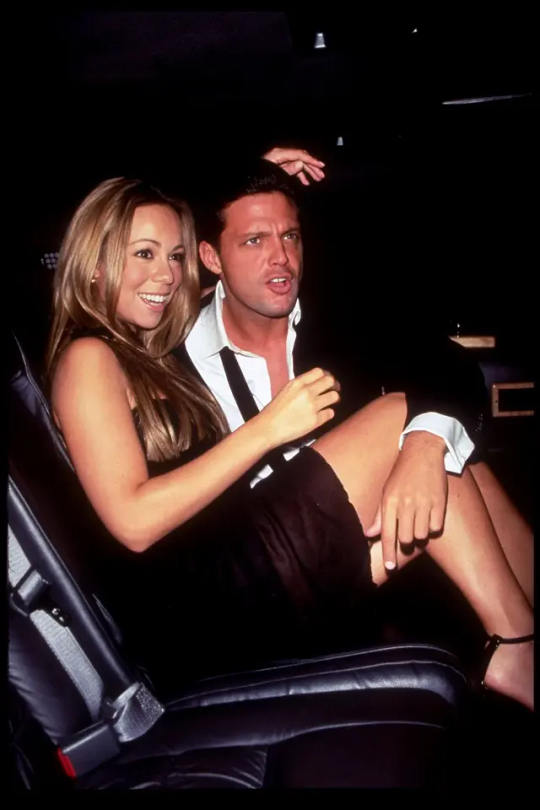
Mariah Carey and Luis Miguel sit together in the backseat of a limousine in NYC | June 15, 1999
36 notes
·
View notes
Video
youtube
Mariah Carey - Giving Me Life (feat. Slick Rick & Blood Orange) 2018
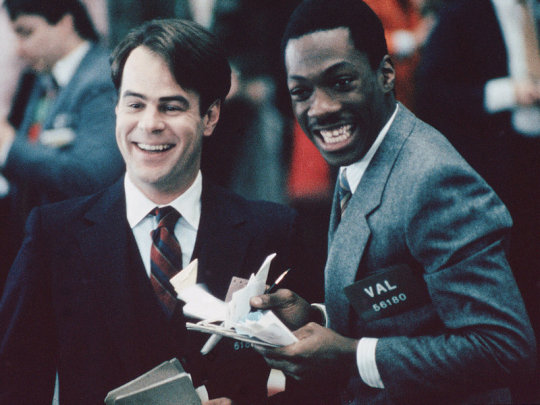
The song begins with an unexpected audio sample from the 1983 film ‘Trading Places’. By injecting this clip of nostalgia from her youth, Carey manages to create a retrospective and reflective atmosphere to the song thinking back to days gone by.

An organ-like synth plays the main, repeated riff which creates an eerie or haunted vibe. The reverb adds to the organ sound creating a sense of space in the music, similar to that of a cathedral with a naturally reverberant acoustic. This also adds to a sense of grandeur and space.
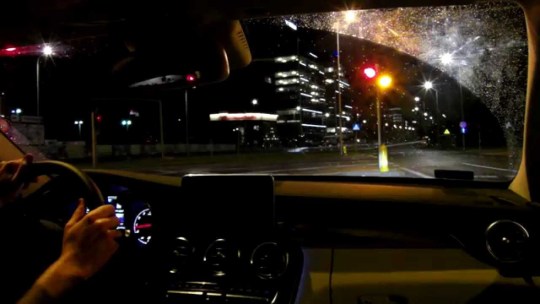
“if you’re so inclined let’s take a ride tonight” - the sonics of the production and the melody line itself create a notion of darkness by employing reverb, dissonance and minor chords - however the textures of the synths and warmth of the instrumentation create a warm sense of glowing light.

The drum beat creates a groove suitable for driving and the sonic nature of the piece lends it to driving at night.

You can hear the sound of the city in this track - with Mariah and Slick Rick bothe being New Yorkers and Dev Hynes being from London, the track has a definite urban feel.
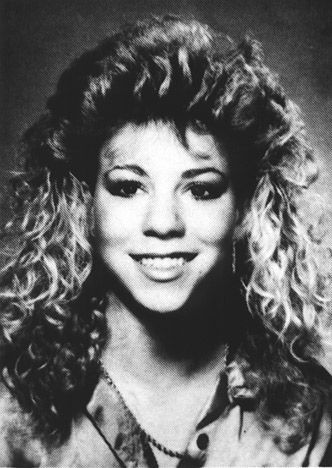
“thinkin’ bout when we were seventeen” - a teenaged Mariah pictured in her 1987 school yearbook. A picture capturing her before the superstardom and perhaps the Mariah she is trying to reconnect with on the song.


“lil splash of wine and forget about it” - The intensity of the song is created by the warm, lush production as well as Mariah’s decorative vocal performance juxtaposed by intimate and reflective lyrics.
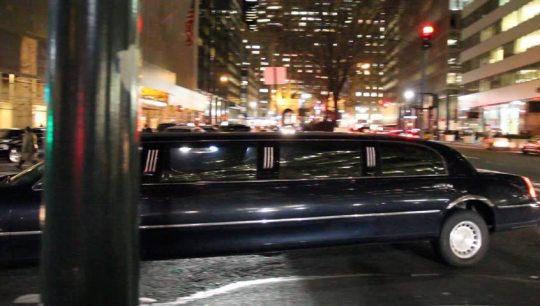
Here, the limousine is reflective of the high sheen, polished production and performances by Devonte Hynes of Blood Orange and Mariah Carey, however the cityscape surrounding it reflects a ruggedness encaptured by the Hip-Hop inspired drums and rap verse from Slick Rick.
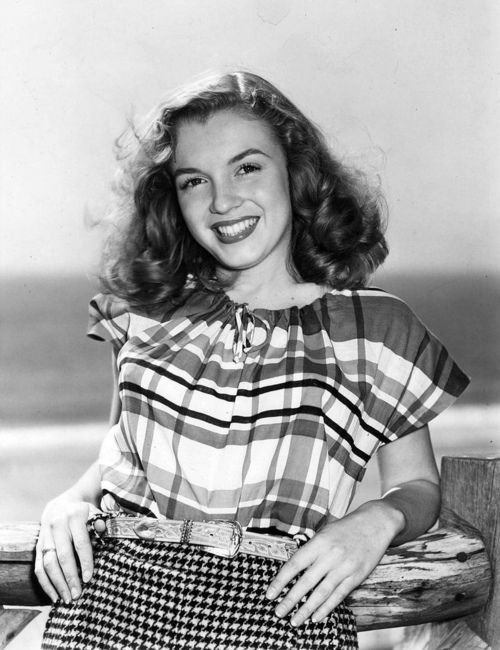

“feeling myself like I’m Norma Jeane” - this lyrically brings to life the juxtaposition between high end glamour and rugged real life by using the transformation that Norma Jeane underwent to become Marilyn Monroe

The records in this image symbolise a variety of musical inspirations that have been drawn on to create this song as quite an experimental song for Carey. By using the fresh, contemporary production skills possessed by Dev Hynes (synths, guitars, drum patterns etc) as well as the classic rap style of experienced rap heavyweight Slick Rick, an interesting direction has been taken for Mariah and her music.
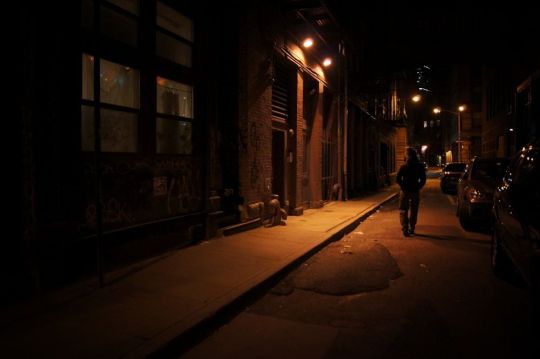
Despite the track being heavily produced and sonically busy, there is a sense of solitude which is pedalled by the introspective lyrics as well as the increasingly sparse instrumentation, especially leading in to the instrumental ending beginning at 4:35 of the track.
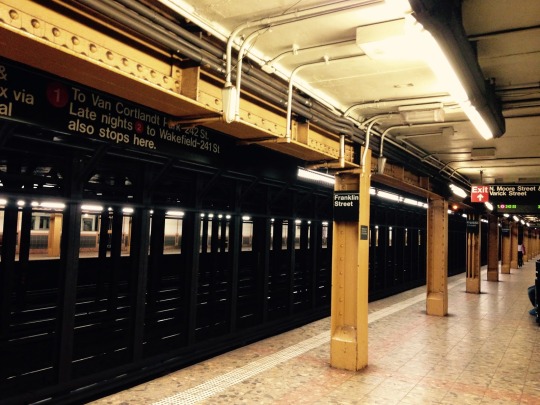
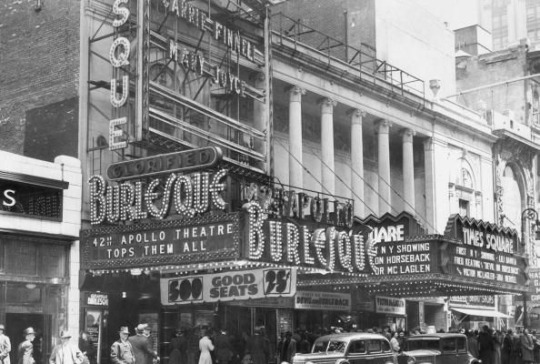
Despite the contemporary instrumentation, there is a sense of old Hollywood glamour, partly due to the Marilyn Monroe reference and partly due to the stylish vocal performance.
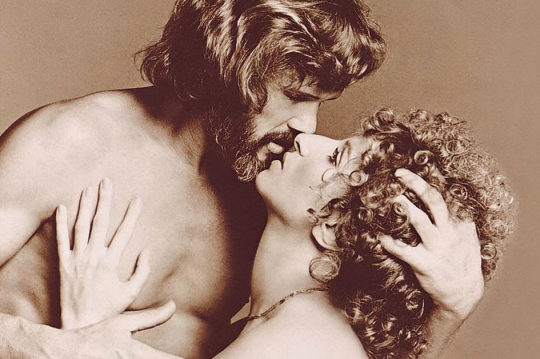
“living like Babs cos it’s evergreen” - a reference to Barbra Streisand’s performance of ‘Evergreen’ from her starring role in the 1976 version of ‘A Star is Born’. In both songs, they are both talking about their love as something which should be forever lasting or ‘evergreen’.
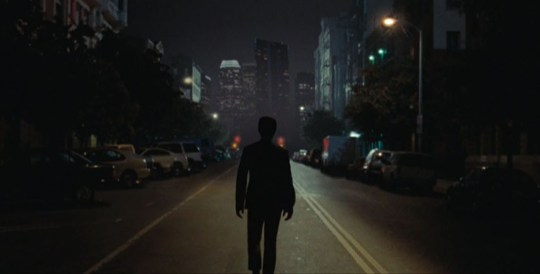

The song’s lyrics are definitely introspective, and there is strong songwriting displayed. The song is written by Mariah Carey, Devonte Hynes (Blood Orange) and Richard Walters (Slick Rick) and as the only featured artists, there is a definite synergy between them that is tangible in the song.



The above are images taken by Architectural Digest of Carey’s Manhattan apartment. She is reminiscing about a relationship from her youth where she did not possess the fame or power that she has acquired since then, illustrating that beyond the grandeur is a longing for something that she can no longer access.
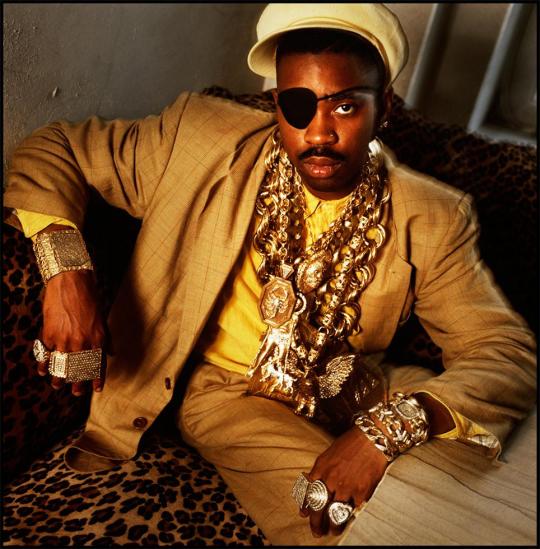
Richard Walters (Slick Rick)

Devonte Hynes (Blood Orange)
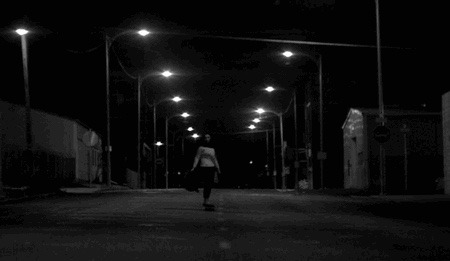
The personal lyrics and urban sound to the song is enraptured by this lone female skateboarding through the city at night.

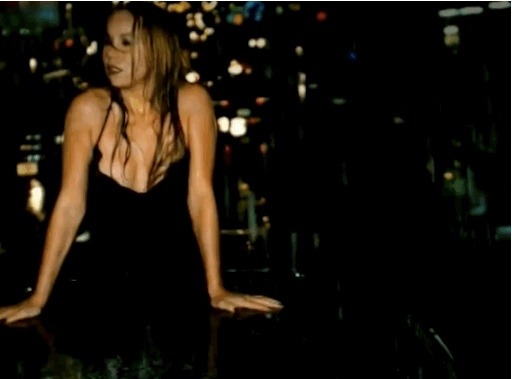
Stills from the 1998 music video for ‘The Roof’ - the song reminded me sonically of Mariah’s song ‘The Roof’, a song from her back catalogue which explores similar sonic production. This was another Hip Hop influenced track which was built around Mobb Deep’s ‘The Shook Ones Part II’.
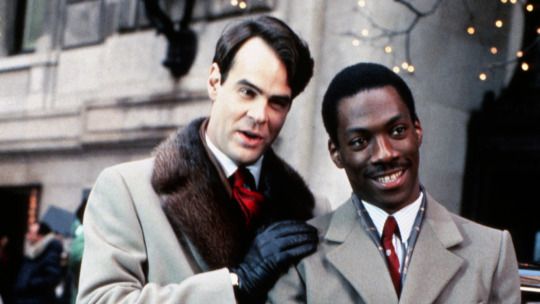
Another sample from ‘Trading Places’ is played during the outro of the song.


The warm tones of this city skyline compliment the sumptuous instrumentation and vocal performance.

A lone female in the city at night demonstrates the reflective nature of the lyrics as well as the urban feel.
3 notes
·
View notes
Photo
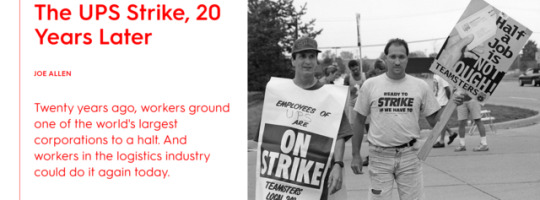
JACOBIN MAGAZINE
Twenty years ago, the Teamsters’ national strike against United Parcel Service (UPS) produced panic, if not outright hysteria, in the corporate boardrooms of the United States.
The editorial writers of the Wall Street Journal were at their wits’ end:
The UPS strike is so weird it’s hard to know where to begin. Somehow, we’re supposed to believe that the mighty Teamsters has suddenly decided it must paralyze the nation’s parcel-distribution system to have it out over mostly voluntary part-timers and various pension arcana. These matters may be worth an argument, but Armageddon? What’s this weird, awful strike about anyway?
Everybody else, though, seemed to get it.
Then-New York Times columnist Bob Herbert wrote that the UPS strike “is best seen as the angry fist-waving response of the frustrated American worker, a revolt against the ruthless treatment of workers by so many powerful corporations.” Even right-wing Chicago Sun-Times columnist Dennis Byrne didn’t have to think too hard about it: “Working men and women have paid dues enough; it’s time to pass around some of the prosperity.”
With 185,000 Teamsters on strike for nearly three weeks beginning on August 4, 1997, fighting under the slogan of “Part-Time America Won’t Work,” the UPS strike proved to be the most popular strike in a generation. Now that the US and world economy revolves around the burgeoning logistics industry — dominated by giant corporations like UPS, FedEx, Walmart, and the quickly growing Amazon — we should look back to the 1997 UPS strike for lessons on how to revive a dying labor movement, and how to hit capital where it hurts.

Contract Campaign
The future of the Teamsters hung on the outcome of the 1997 UPS contract.
Ron Carey, the Teamsters’ first reform-minded general president, was elected to office in 1991 against two old-guard slates in the first government-monitored, rank-and-file election in the union’s history. The majority of his slate were members of the Teamsters for Democratic Union (TDU), the longstanding Teamsters reform group whose origins were in the radical rank-and-file movements of the 1970s.
Carey won the election with a little more than 48 percent of the vote, shocking the media, labor officialdom, and major employers who thought he didn’t have a shot at winning. The TDU imprint on the victory of the Carey slate was unmistakable. Post-election, TDU concluded:
A close look at the election results shows clearly that where TDU organizing has been strongest, the Carey Slate win was strongest — even in the opposing camp’s back yards.
Carey’s triumph set off a chain reaction of events that toppled the sclerotic leadership of the AFL-CIO in 1995 and culminated in the 1997 UPS strike. Soon after taking office in 1992, Carey cut his own salary and eliminated the many perks of office held dear by previous old-guard officers and staff such as limousines and private jets — the infamous “Teamsters air force.” He also began the difficult and painstaking process of removing dozens of corrupt local leaders, many connected to the mob.
He shocked UPS in February 1994 with a national safety strike after the company unilaterally raised the weight limit of packages, in violation of the contract. The company was not expecting such a militant response to a move they considered to be their prerogative. Clearly, UPS was dealing with a different type of Teamster leader.
Carey won re-election in 1996 against an old-guard slate led by James P. Hoffa, son of the notorious and presumed-dead Teamster leader Jimmy Hoffa. It was a physically demanding and bruising contest. Teamster employers clearly favored a Hoffa victory as akin to something of a welcome counterrevolution in their eyes. “In all honesty, my clients’ interests are best served by a return to the Old Teamsters,” declared Gary Marsack, a Milwaukee-based lawyer representing Teamster employers, and a former grocery industry executive.
Ron Carey and the reformers triumphed in no small part due to Carey promising major gains in the upcoming 1997 contract. In order to win those gains at UPS, the Teamsters organized a contract campaign on a massive scale. “First, you have to get organized. You have to have something that brings you together. When you are organized, you then create the leverage you need,” recalled Ron Carey. The leverage Carey wanted could only be achieved by a national contract campaign.
Rand Wilson was tapped to be communications coordinator and campaign strategist for the contract campaign. Before being recruited by Teamster friends to work under the new reform leadership, Wilson had worked since the 1980s as a union organizer and led several important labor-centered political campaigns.

Steven Greenhouse, the labor reporter for the New York Times, observed Wilson in action during the fractious 1996 Teamster convention in Philadelphia:
Tucked in a booth belonging to the union’s Parcel & Small Package Division, Rand Wilson was preoccupied with another, distant battle. He was buttonholing dozens of UPS shop stewards and stuffing their pockets with a booklet called “Countdown to the Contract.” It contained a month-by-month calendar until the July 31 strike deadline and gave myriad tips on how to escalate pressure on the company and build a communications network to keep workers informed and involved.
“The International Union began sending bulletins to every UPS member’s home,” Wilson later wrote. Fellow communication department staffer Matt Witt,
highlight[ed] the importance of Teamster families’ involvement in the upcoming contract campaign. Nine months before the contract deadline, every member received a survey asking them to help shape the union’s bargaining priorities.
Wilson crafted the membership survey with Ron Carey and Ken Hall, a West Virginia Teamster and the new parcel director for the Teamsters. The survey asked members what priority the union negotiating committee should place on either creating more full-time jobs, winning wage increases, or improving pensions. The “Countdown to the Contract: UPS Teamster Bargaining Survey” was more than a long list of questions. “The bargaining survey was a very important part of the contract campaign,” according to Wilson.
Working closely with the Research Department, we put a lot of effort into how we framed issues so that the questions didn’t divide full timers from part timers, or feeder drivers from package car drivers. The distribution and return of the surveys was just as important because that allowed the leadership to gain intelligence about which locals had the organizational capacity to get a large number filled-out and returned. It signaled who were willing to actively participate.
It was expected that UPS would continue their push for major concessions from the union — possibly greater ones than demanded in the past. Unsurprisingly, the survey found that for 90 percent of part timers, the top priority was creating more full-time jobs. The Teamsters Research Department produced a well-documented booklet Half a Job Is Not Enough that revealed, among many other shocking things:
The last Teamster-UPS contract was negotiated in 1993. Since then, the part-time work force at UPS had grown by 43 percent, while the number of full-time jobs has grown by only 10 percent. UPS has hired an additional 46,300 workers, but more than 38,500 of them have been placed in part-time jobs. Therefore, 83 percent of the new jobs at UPS have been part-time jobs.
It was not just the growth in the number of part-time jobs at UPS, but the shift toward part-time work.
Of course, one would expect part-time employment to grow, as the company expands. However, the shift to part-time jobs is way out of proportion when compared with overall growth in the economy. Since 1993, the volume of packages handled by UPS grew by eight percent. Total company revenues grew by 26 percent. But part-time jobs grew by 43 percent, much more rapidly than the company as a whole.
UPS made over $4 billion in profits during the life of the 1993-97 contract. It was well positioned to create more full-time jobs and close the wage gap between part-time and full-time workers and UPS workers knew it. More than 100,000 of them signed a petition demanding that UPS stop increasing the number of part-time jobs and start creating more full-time ones.
During the past two contract negotiations, the Teamsters struggled to successfully counter the company’s daily propaganda broadcasts at “Pre-Work Communication Meetings” (PCMs). For this contract campaign, to ensure a regular flow of information to the ranks, Ken Hall instructed
all Teamster local unions to set up “member-to-member” communication networks. Under these networks, each steward or other volunteer was responsible for communication with approximately twenty workers. The International Union deployed education staff and field representatives — some of them UPS rank-and-filers — to help locals get the networks established.
The “member-to-member” campaign was certainly the largest initiative ever in the union — if not the entire US labor movement — to involve 185,000 rank-and-file union members in a contract campaign.
We Wanted People We Could Count On
The Field Services Department was to play a crucial role in the upcoming contract campaign. Carey created it soon after taking office for his first term, and it organized contract campaigns and ran strikes for contracts negotiated by the international union in Washington. Field Services Department director David Eckstein worked closely with Rand Wilson, training a crew of field representatives for the upcoming UPS contract campaign.
Eventually forty people, drawn from a cross-section of the varied Teamster membership including freight, car haul, warehousing, and UPS, were trained to focus exclusively on the campaign. “We wanted people we could count on,” David Eckstein recalled. “We wanted to create an army the company couldn’t buy.”
The field representatives were expected to work around uncooperative local officials, mostly old-guard figures allied with James P. Hoffa. “We had a lot of resistance in Minnesota and Wisconsin,” Eckstein remembered. Carey and Eckstein held two-man meetings with local officials about the upcoming contract. Eckstein vividly remembers Carey laying it on the line:
I know some of you don’t like me, but this is a national contract campaign and it is going to happen. We have two plans: Plan A is where we give you everything you need to move the campaign in your local, and Plan B is the same as Plan A but we move it in your local without you.
According to Eckstein, Carey made it clear that the full weight of the general president’s office would be brought to bear on uncooperative local officials — including the possibility of the nuclear option, trusteeship, in which the international union would seize control of a local and dismiss much of its leadership.
On March 7, four days before national negotiations began, the Teamsters organized a national contract meeting with two representatives from each of the 206 local unions representing UPS workers to outline contract goals and strategy.
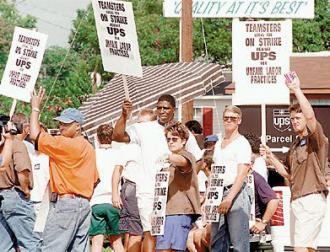
Three days later, UPS Teamsters rallied in ten major cities including Atlanta, Chicago, Dallas/Fort Worth, Los Angeles, New York, Philadelphia, and Seattle. “UPS is a billion-dollar company,” Carey told the media, “that can afford to provide good full-time jobs with pensions and health care.” The rallies around the country gave UPS Teamsters confidence that the international union was solidly behind their most important demands and grievances.
On March 11, contract proposals were exchanged. As predicted, UPS, despite making record profits, demanded wide-ranging concessions on subcontracting, pensions, and health care coverage.
(Continue Reading)
#politics#the left#organized labor#labor movement#strike#history#UPS strike#workers rights#workers union#capitalism#corporatism#jacobin#jacobin magazine
55 notes
·
View notes
Link

See more reviews below: Carey Executive Limousine 245 University Ave SW, Atlanta, GA 30315 (404) 223-2000 PJC3+VF Atlanta, Georgia
from https://local.google.com/place?id=13124965900316581832&use=posts&lpsid=4896331043115386124
0 notes
Text
Superstar Limo: The story of Disney's "worst attraction ever"
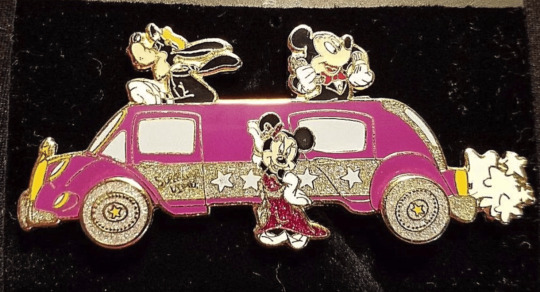
We can all take some comfort that even Disney, with all its money and creative resources, can fail.
Take for instance, Disney's epic failure, a long-gone ride called Superstar Limo. The dark ride, that was once in California Adventure's Hollywood Pictures Backlot area, took guests in a sparkly purple limousine through a distorted version of Hollywood and Los Angeles. It was open just under a year and was later (and as you'll see in the video, hilariously) repurposed as the Monsters, Inc. ride.
Kevin Perjurer of the YouTube channel Defunctland describes it as their "worst attraction ever" and offers this critical history of it. His video is 20 minutes long but worth a watch, as his research goes deep and this "Superstar Limo" truly has to be seen to be believed. Be sure to stay to the end to see the reactions of the cast of The Drew Carey Show and Rosie O'Donnell when they all took a whirl in it together.
https://boingboing.net/2018/05/26/superstar-limo-the-story-of-d.html
13 notes
·
View notes
Photo

ODB 👑👑👑 Ol' Dirty Bastard's first solo album, Return to the 36 Chambers: The Dirty Version, spawned the hit singles "Brooklyn Zoo" and "Shimmy Shimmy Ya", which helped propel the album to platinum status. The album's sound was noted by several music writers as being as "raw and gritty" as 36 Chambers, with RZA and 4th Disciple producing beats of an even more minimalist and stripped-down style than on the group's debut album. In this same year, Ol' Dirty Bastard collaborated with Mariah Carey for the "Fantasy Remix". It was around this time that Ol' Dirty Bastard gained notoriety when, as he was being profiled for an MTV biography, he took two of his seven children by limousine to a New York State welfare office to cash a $375 welfare check and receive food stamps; his latest album was still in the top ten of the US charts. The entire incident was filmed by an MTV camera crew and was broadcast nationwide. Although he had recently received a $45,000 cash advance for his first solo album and was earning a cut of the profits from the Wu-Tang Clan's debut album, Ol' Dirty Bastard was still listed as eligible for welfare and food stamps due to the fact that he had not yet filed his taxes for the current year. His caseworker revoked his eligibility after seeing the MTV segment, and the incident was viewed as an example of the welfare abuses that led to the significant welfare reforms enacted in 1996. In 1997, Ol' Dirty Bastard appeared on the Wu-Tang Clan's second and most commercially successful work, the double album Wu-Tang Forever. He had fewer appearances on this album than the group's debut, contributing to one solo track ("Dog Shit"), three verses ("Maria", "Reunited", "Heaterz"), one hook ("As High as Wu-Tang Get"), and a spoken introduction/refrain ("Triumph"). #hiphop #hiphopculture #goldenera #hiphopshirts #shirts #diggininthecrates #rap #stacksrundeep #stacksunltd #RussellJones #OlDirtyBastard #ODB #RIPODB #DirtDog #BigBabyJesus #DirtMcGirt #Osiris #AsonUnique #TheBZA https://www.instagram.com/p/B39aOSZn4wC/?igshid=1s3kzolqe5hqe
#hiphop#hiphopculture#goldenera#hiphopshirts#shirts#diggininthecrates#rap#stacksrundeep#stacksunltd#russelljones#oldirtybastard#odb#ripodb#dirtdog#bigbabyjesus#dirtmcgirt#osiris#asonunique#thebza
0 notes
Text
Playlist 7/11/19
Suffragette Station 20th anniversary show!
Everything is Music - Kris Delmhorst
As Cool As I Am - Dar Williams
Fall or Fly - Edie Carey
Easy People - The Nields
Whisper - Jenny Reynolds
Radical - Catie Curtis
Number Six Driver - Eddie From Ohio
It’s a Long Way Home - Jennifer Kimball
Something Burning - Deb Talan
Hunger - Voices on the Verge
1984 - Anaïs Mitchell
Tigers Above, Tigers Below - Ellis
The Boob Fairy - Deirdre Flint
Lesbo Song - Faith Soloway
9/8 Central - Liz Carlisle
Fireflies - Lori McKenna
Beautiful Dawn - The Wailin Jennys
The Littlest Birds - The Be Good Tanyas
Drag Queens in Limousines - Mary Gauthier
When We Knew It All - Cheley Tackett
Goodtime Van - Terri Hendrix
2 Horns and 2 Wings Michelle Malone & The Low Down Georgia Revue
Like a River - Kasey Chambers
I Make the Dough, You Get the Glory - Kathleen Edwards
STAN block:
Did I Shave My Legs For This? - Deana Carter
Love Is Dead - Hazel English
The Only One - Beauty Queen
Esto Es Real (8100 mg) - Combo Chimbita
Trophy Wife - Girls of the Internet
Six O’Clock News - Kathleen Edwards
Superbike - Jay Som
Disco - Surf Curse
Unhand Me You Wretch - Dusty Trails
Lotus Gate - Kainalu
Space and Time - Miloe
Besos de Mezcal - Flor de Toloache
¿Qué Tiene? - Ximena Sariñana
Como La Flor - Dracula
Christmas Time Is Here - Khruangbin
Cáile (feat. Buscabulla) - Clubz
Escape From Los Angeles - Holy Ghost!
0 notes